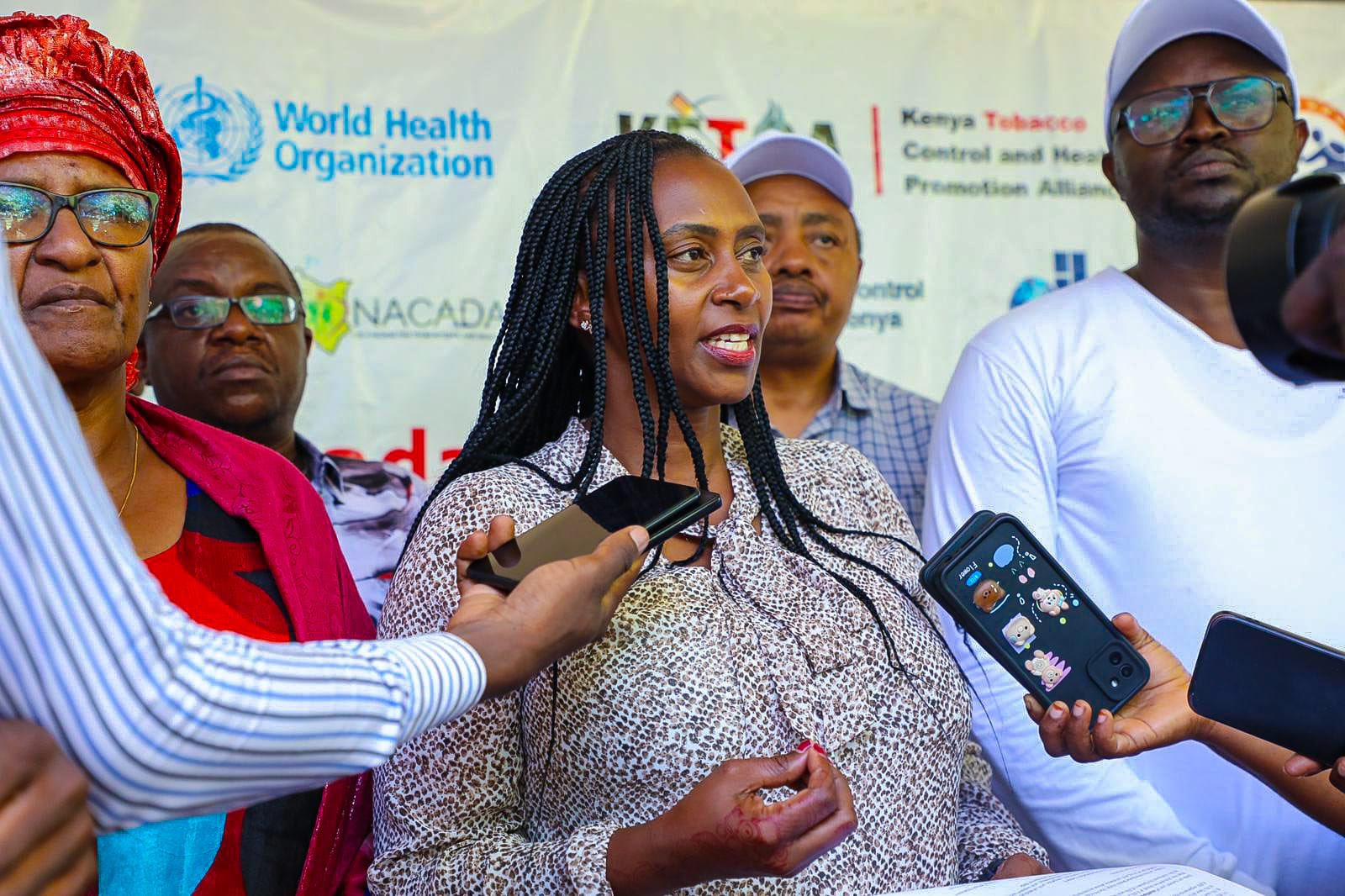
MoH launches nationwide campaign to tackle drug and substance abuse » Capital News
NAIROBI, Kenya, Feb 13 – The Ministry of Health has launched a nationwide campaign to tackle the growing crisis of drug and substance abuse, targeting regions with the highest prevalence.
Speaking on Thursday, Principal Secretary for Public Health Mary Muthoni said the initiative, spanning all forty-seven counties in ten clusters, focuses on equipping communities with the knowledge and tools needed to prevent addiction and support recovery.
Muthoni underscored the urgency of collective action, stating that the fight against drug and substance abuse is a national priority.
“We must empower communities, strengthen enforcement, and provide robust support systems to break the cycle of addiction,” Muthoni said.
She added that the campaign comes in response to alarming statistics, with 4.7 million Kenyans reported to be using substances, including high rates of alcohol and tobacco dependency.
Muthoni emphasized that the Ministry aims to foster a healthier, drug-free society through awareness drives, capacity-building programs, and collaboration with stakeholders.
This comes as a new study by the National Authority for the Campaign Against Alcohol and Drug Abuse (NACADA) reveals a disturbing rise in drug and substance abuse among university students, with a notable spike linked to last year’s Gen Z-led demonstrations.
Speaking at the launch of the Status of Drugs and Substance Use Among University Students in Kenya report on Thursday, NACADA CEO Anthony Omerikwa warned that the findings should serve as a wake-up call for the country.
“The findings of this report will make you sit up and take notice of the status of alcohol and drug abuse among our youth. It reveals a very serious and growing problem, especially among those in higher learning institutions,” he said.
One of the most alarming revelations from the study was the “unintended” link between drug use and last year’s youth-led demonstrations.
Omerikwa noted that many young protesters were introduced to drugs during the protests, under false claims that substances like cannabis could reduce the effects of tear gas.
“Some of the young people who participated in the protests became unexpected inductees into the space of drug use. They were deceived into believing that if they smoked bhang, the effects of tear gas would diminish to near zero,” he said.
The report indicates that some individuals apprehended during the protests admitted to using drugs for the first time during the demonstrations.
Omerikwa estimated that 70 percent of those apprehended were students from higher learning institutions.
He emphasized that drug abuse among young people is not just a campus issue but a national crisis requiring urgent collective action.
Omerikwa stated that the findings provide a critical baseline for tracking drug use trends and evaluating the effectiveness of government interventions.
“This report will inform deliberate measures to either improve what we are already doing or introduce new strategies to combat drug use,” he explained.
To address the crisis, NACADA pledges to use the study’s findings to tailor drug prevention strategies, enhance awareness campaigns, and promote positive parenting.
The agency will also focus on strengthening multi-sectoral collaborations to curb the supply and demand of illicit substances.